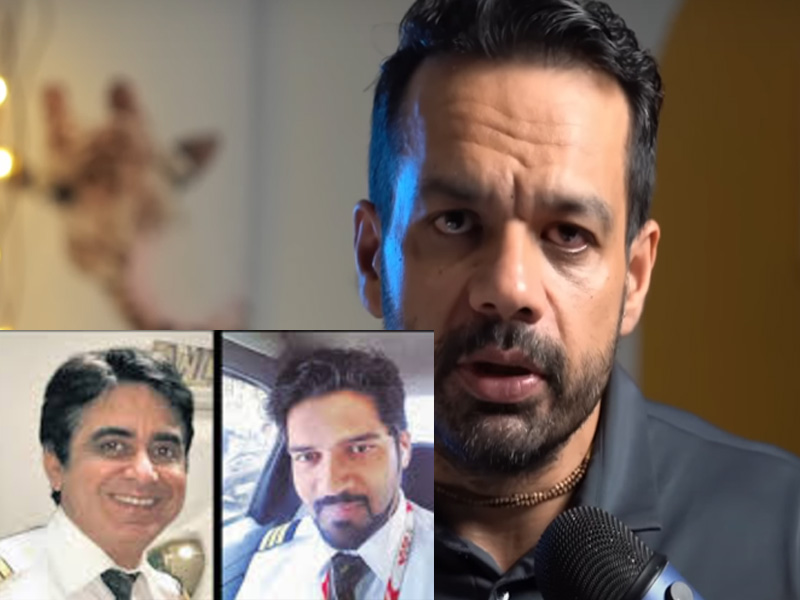Pilot, YouTuber Gaurav Taneja, popularly known as Flying Beast, has strongly criticized the preliminary report of the Aircraft Accident Investigation Bureau (AAIB) on AI 171 Crash which happened on the 11th of June 2025.
He, with his video, disputed reports that implied the suggestion of error being made by the Pilot. He called it potentially biased and incomplete. As per his claims, some crucial details have been omitted from it (deliberately or unintentionally), and this raises serious questions on fairness and the direction of this entire investigation.
Why can it not be the Pilot’s error, as per Gaurav Taneja?
Taneja, who is dismantling the AAIB theory, has put forward some technical arguments. At first, he highlighted that if the pilots in-flight intentionally cut off fuel, they would not have switched it back on and yet the report confirms that the fuel supply got restored.
Taneja also emphasized that only one engine got lit up again which should raise the question as to why the second engine didn’t came back to power.
Taneja further highlighted the critical sequence—pilots moved fuel control switches back to the RUN option. The action, as he stressed, shows a clear intent to restart engines and try to save the aircraft. As per him, this contradicts the theory of deliberate sabotage/incapacitating error by the pilot.
Then Taneja went ahead and pointed out that pilots did follow all emergency protocols, which included a “calm Mayday” call. They even attempted to minimize the crash impact—actions that were inconsistent with the deliberate sabotage claims. As per him, it’s professionalism and the fight to end the disaster. It is inconsistent with intentional downing or panic. As per him, the cockpit voice recording is lacking conflict evidence, undermining all theories of deliberate harmful actions.
Apart from the above, Taneja further stated,
- CCTV footage clearly shows that the nose was raised even before impact to try and cushion the crash. Such deliberate sabotage will include high-speed noseidive for max damage.
- Mayday was now a premature radio call. It was issued 6 seconds before the crash and shows priority to control.
- As per Taneja, Boeing’s history of system failures here is being ignored. TMCA can auto-cut the thrust. FAA service bulletins warned about faulty engine processors (GEnx-1B), but AAIB failed to address them.
Flying Beast even questioned why AAIB is excluding timestamps for cockpit conversations and the operation of the fuel switch. As per him, it’s a cover-up to shield Boeing from taking accountability.
Gaurav Taneja claims AAIB is biased towards Boeing
Taneja openly accused AAIB of downplaying Boeing’s potential role in the crash. He noted that the report has vague language. It has a lack of engine failure timelines.
As per his argument, engines quite likely failed before fuel cutoff switches got toggled. He implies pilots were just reacting to existing failure. The Ram Air Turbine (RAT) deployment, which happens post-engine failure, supports his argument. Yet, the entire AAIB report frames it as pilot error, a conclusion which, as per Taneja, is an eyewash.
Further ahead, inclusion of out-of-context cockpit question—”Why did you cut off?” after the discussion of fuel switch, without having context or full dialogue, this, as per Taneja, is subtly steering the readers to the responsibility of the Pilot. He questioned why verbatim CVR transcripts are not provided to bring transparency here?
Getting to FADEC, he pointed out, misspelling it in an official document and any lack of safety recommendations immediately taken for other Boeing 787 operators, fuels his skepticism. As suggested by Taneja, these elements, with the structure and omissions of the report, show a predisposition to protect the manufacturer due to vested interests. It, in a manner, indirectly places all blame on deceased pilots who cannot defend themselves.



